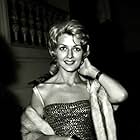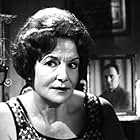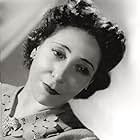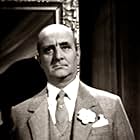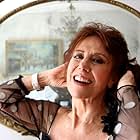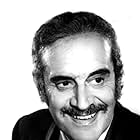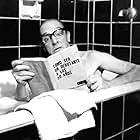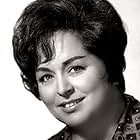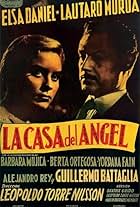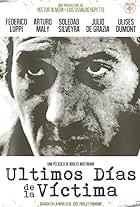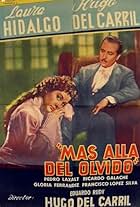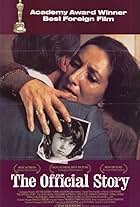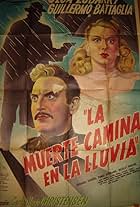Out of the blue, a meek, old painter begins receiving love letters from Rosaura. This intrigues his fellow boarding house tenants, so they involve themselves into his relationship until one ... Read allOut of the blue, a meek, old painter begins receiving love letters from Rosaura. This intrigues his fellow boarding house tenants, so they involve themselves into his relationship until one day the mysterious Rosaura appears.Out of the blue, a meek, old painter begins receiving love letters from Rosaura. This intrigues his fellow boarding house tenants, so they involve themselves into his relationship until one day the mysterious Rosaura appears.
- Director
- Writers
- Stars
- Awards
- 1 win & 1 nomination total
- Director
- Writers
- All cast & crew
- Production, box office & more at IMDbPro
Featured reviews
10Bocio
One of the best Argentine films ever made an a glorious case of transposition from literature to cinema. Several flashbacks from diverse people recreates what happened before or after Rosaura -an enigmatic blonde woman- arrives at ten o'clock to some middle class small hotel of Buenos Aires. In the tradition of Akira Kurosawa's Rashomon, this stunning film is a must see for those who believes that cinema, from time to time, can be classifies as an outstanding art.
Once in a while I see some really good movies...movies that stay in my mind days even weeks after I see them. The last time I was this taken aback by a movie was when I first saw Guru Dutt's Pyaasa. It also helped that I saw it in its original cinemascope in a very large screen in the Los Angeles County Museum of Art's Latin American Cinema retrospective.
Done in a Rashomon-like telling and retelling of a story taking different angles from different characters, I think Rosaura a las 10 tops Kurosawa's tale by not only telling the same story multiple times, but having each perspective actually tell a literally different story. In addition, whereas Rashomon became a little redundant to me, Soficci kept the story interesting by keeping the reality of the situation--that what we see is not all what it is--as evident in all the stories, thus destabilizing even the "subjective truth" of each perspective, questioning each view and emphasizing the objectivity of the camera. See for example the maid, who lurks about in all of the stories. No one sees her lurk around, but the camera records it nonetheless.
All of these allow the characters be, showing them as they are and as human as possible. The movie ends the same way as it begins, and the way it does this is nothing short of genius.
As you can tell, I'm still trying to wrap my head around this movie. It's incredibly multi-layered, and the form (especially the night scenes after the painter and Rosaura's wedding) incredibly reflects the themes of the movie. This movie for me ranks very high, certainly alongside the likes of Milestone's All Quiet on the Western Front, Welles' Magnificent Ambersons, Dutt's Pyaasa, Davies' Distant Voices Still Lives, Bernal's Himala, and Anderson's Royal Tenenbaums. It's a pleasure to encounter such a rewarding movie.
Done in a Rashomon-like telling and retelling of a story taking different angles from different characters, I think Rosaura a las 10 tops Kurosawa's tale by not only telling the same story multiple times, but having each perspective actually tell a literally different story. In addition, whereas Rashomon became a little redundant to me, Soficci kept the story interesting by keeping the reality of the situation--that what we see is not all what it is--as evident in all the stories, thus destabilizing even the "subjective truth" of each perspective, questioning each view and emphasizing the objectivity of the camera. See for example the maid, who lurks about in all of the stories. No one sees her lurk around, but the camera records it nonetheless.
All of these allow the characters be, showing them as they are and as human as possible. The movie ends the same way as it begins, and the way it does this is nothing short of genius.
As you can tell, I'm still trying to wrap my head around this movie. It's incredibly multi-layered, and the form (especially the night scenes after the painter and Rosaura's wedding) incredibly reflects the themes of the movie. This movie for me ranks very high, certainly alongside the likes of Milestone's All Quiet on the Western Front, Welles' Magnificent Ambersons, Dutt's Pyaasa, Davies' Distant Voices Still Lives, Bernal's Himala, and Anderson's Royal Tenenbaums. It's a pleasure to encounter such a rewarding movie.
I'm living in Buenos Aires again, after a long absence. Today, rummaging among hundreds of old movie titles from the world over, in one of the many shops that sell inexpensive copies (10 pesos each!! consider..., 1 Dollar = 3,70 pesos!!), I bought, among others, a copy of "Rosaura a las diez" (Rosaura, at ten o'clock).
I read the few surprisingly good comments done recently by other reviewers, and although I agree with them about the quality of this movie, I think it a bit rushed to say that it is one of the best movies ever made.
Sorry, I'm Argentinian, and I would love to see it that way, but I don't. The basic idea is excellent (A remake could be done nowadays that could be a real knock out of a picture), but the treatment is very old fashioned.
Especially the first half of the movie, almost like filmed theater. The actors are a bit exaggerated, specially María Luisa Robledo, the boarding house owner; and most unfortunate was the casting of the Spanish comic actor, Juan Verdaguer, that in this straight role (As Mr. Canegatto -- Composite of two Italian words: Dog-Cat), is totally out of place, with a flat delivering of his lines in a very harsh voice.
Susana Campos (Rosaura, the main character) was a lovely beauty, and a very good actress. Nelly Beltrán (In a cameo role) was superb as a low life character. The second part of the movie, visually, changes so much that one could think somebody added another film to this one.
The photography turns surrealistic, harsh black and white contrasts following the style of the classic German movies of the 30's. Very good indeed. There is a violent scene so realistically portrayed that is almost awesome, since at that time the Argentinian cinema lacked completely the technique for this kind of playing.
The director, Mario Soffici, acts in some scenes (the millionaire that hires Mr. Canegatto to paint a portrait), quite correct in his character.
The music was good, although in some scenes is a bit too much, too theatrical and bombastic, but maybe it was the fashion at the time.
The continuity is excellent, being a story with a very definite twist to it, quite unexpected and surprising too! All in all, an excellent old movie for nostalgics of the old black and white films (although this one is in Cinemascope). Ah! the very last scene of this movie, before the word 'Fin' (End) appears, is a true gem!!
Just being able to watch this ending justifies seeing this movie.
I read the few surprisingly good comments done recently by other reviewers, and although I agree with them about the quality of this movie, I think it a bit rushed to say that it is one of the best movies ever made.
Sorry, I'm Argentinian, and I would love to see it that way, but I don't. The basic idea is excellent (A remake could be done nowadays that could be a real knock out of a picture), but the treatment is very old fashioned.
Especially the first half of the movie, almost like filmed theater. The actors are a bit exaggerated, specially María Luisa Robledo, the boarding house owner; and most unfortunate was the casting of the Spanish comic actor, Juan Verdaguer, that in this straight role (As Mr. Canegatto -- Composite of two Italian words: Dog-Cat), is totally out of place, with a flat delivering of his lines in a very harsh voice.
Susana Campos (Rosaura, the main character) was a lovely beauty, and a very good actress. Nelly Beltrán (In a cameo role) was superb as a low life character. The second part of the movie, visually, changes so much that one could think somebody added another film to this one.
The photography turns surrealistic, harsh black and white contrasts following the style of the classic German movies of the 30's. Very good indeed. There is a violent scene so realistically portrayed that is almost awesome, since at that time the Argentinian cinema lacked completely the technique for this kind of playing.
The director, Mario Soffici, acts in some scenes (the millionaire that hires Mr. Canegatto to paint a portrait), quite correct in his character.
The music was good, although in some scenes is a bit too much, too theatrical and bombastic, but maybe it was the fashion at the time.
The continuity is excellent, being a story with a very definite twist to it, quite unexpected and surprising too! All in all, an excellent old movie for nostalgics of the old black and white films (although this one is in Cinemascope). Ah! the very last scene of this movie, before the word 'Fin' (End) appears, is a true gem!!
Just being able to watch this ending justifies seeing this movie.
10235SCOPE
I saw this film many years ago in a truncated (pan and scan) format on television. Despite the fact that the original widescreen photography was gone, I was mesmerized by the Rashomon-like style of the film, with its several versions of the same story about a woman who may or may not have existed at all, and who may or may not have been murdered. It all sounds terribly obscure, but the film's narrative is completely accessible and engaging, almost like a film noir soap opera, and its story extremely interesting.
Rosaura a las 10 is considered one of the best Argentine films of all time. At the time it came out, other films like the aforementioned Rashomon and George Cukor's Les Girls that also played on the theme of the subjectivity of the truth were popular with film audiences.
Rosaura a las 10 enjoyed a restoration to its original CinemaScope dimensions a few years ago and it would be a treasure to own on DVD for aficionados of Argentine films and this kind of story.
Rosaura a las 10 is considered one of the best Argentine films of all time. At the time it came out, other films like the aforementioned Rashomon and George Cukor's Les Girls that also played on the theme of the subjectivity of the truth were popular with film audiences.
Rosaura a las 10 enjoyed a restoration to its original CinemaScope dimensions a few years ago and it would be a treasure to own on DVD for aficionados of Argentine films and this kind of story.
Rosaura a las diez (Rosaura at ten o'clock) published in 1955, was the first novel by Argentine writer Marco Denevi. A clever (if somewhat contrived) and entertaining thriller, it enjoyed instant and enduring popularity; it has never been out of print yet. It even had a second life, in commented editions, as mandatory reading in courses in Latin American literature at many universities in this country and in Europe.
Veteran director Mario Soffici's version of the book is well paced (although it uses some old- fashioned effects). The protagonist is played by Juan Verdaguer, at the time a very successful comedian in movies, television and variety shows. He is perfectly cast and his work as a dramatic actor is good but is somewhat marred by his delivery, tending to the monotonous. The rest of the actors are adequate, with María Luisa Robledo giving the best performance (she gets the best lines). High quality music by Tito Ribero and cinematography by Aníbal González Paz. A movie worth seeing.
Veteran director Mario Soffici's version of the book is well paced (although it uses some old- fashioned effects). The protagonist is played by Juan Verdaguer, at the time a very successful comedian in movies, television and variety shows. He is perfectly cast and his work as a dramatic actor is good but is somewhat marred by his delivery, tending to the monotonous. The rest of the actors are adequate, with María Luisa Robledo giving the best performance (she gets the best lines). High quality music by Tito Ribero and cinematography by Aníbal González Paz. A movie worth seeing.
Storyline
Did you know
- ConnectionsFeatured in Amateur (2016)
Details
- Release date
- Country of origin
- Language
- Also known as
- Rosaura à dix heures
- Production company
- See more company credits at IMDbPro
- Runtime1 hour 40 minutes
- Color
- Sound mix
- Aspect ratio
- 2.35 : 1
Contribute to this page
Suggest an edit or add missing content





